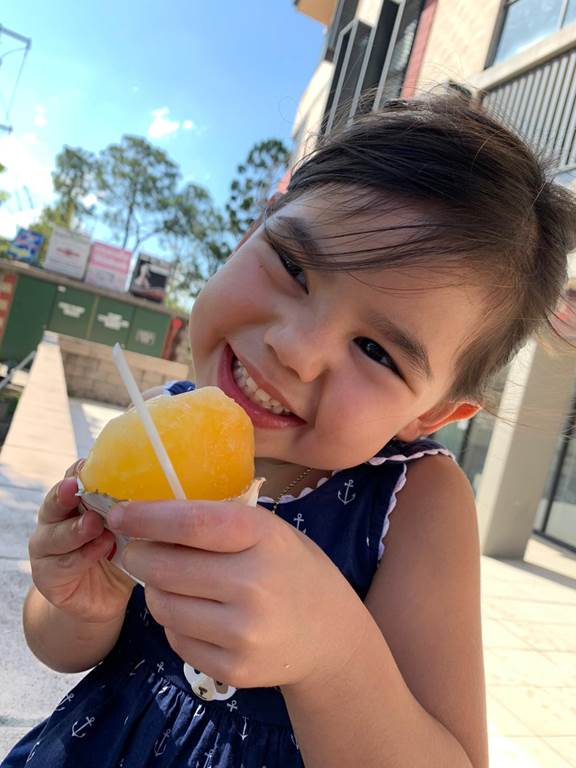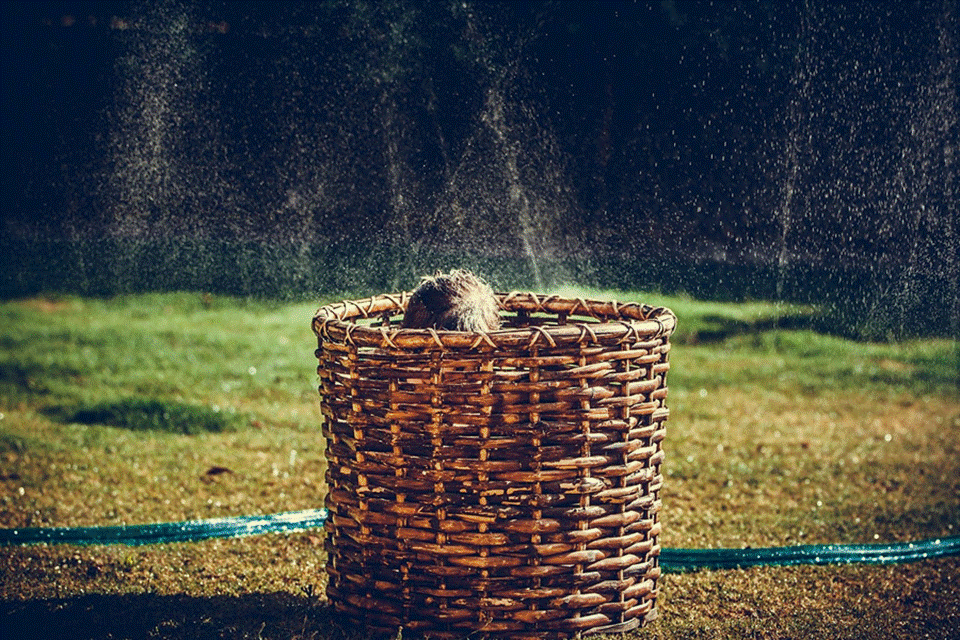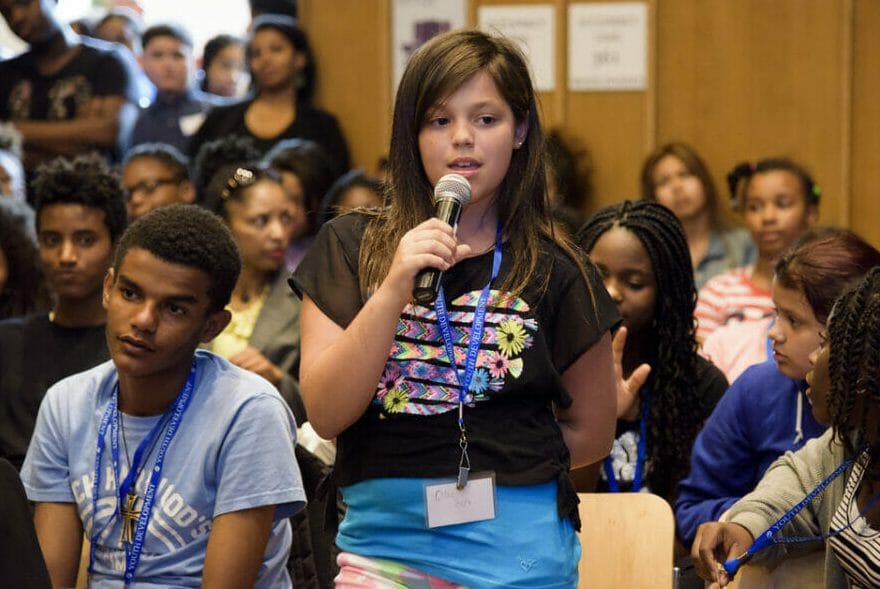
There’s some amount of stress in every relationship, and we respond to it through Fight, Flight or Freeze. So how can we overcome these responses, relax and stay together?
Watching babies and toddlers playing “hide and seek” can teach us a lot about the human mind and how we can improve the relationship game.
Our granddaughter is 3 years old, and we look after her once or twice a week (lucky us). She loves to play “hide and seek”, and we all love to watch her having fun.
For a long time, we had to nominate a person to hide with her, so she would get the hang of it. Because whenever we asked, “Where is Ayla?” she would answer from her hiding place…
Hilarious, right?!
We kept telling her for over a year she wasn’t supposed to laugh or make noises in her hiding place, or answer when we asked, “Where is Ayla?” But for a long time, she looked at us like, “Seriously? You guys don’t know how to play this game”.
Because toddlers don’t play “hide and seek“. They play “hide and find“. They get most excited about the finding part. When we find Ayla, or she finds us, she is overjoyed and wants to go again.
“Hide and find” for grownups

Toddlers will never play “hide and seek” in an unfamiliar place. They always play in the safety of their own home, or in a place they know well, like their grandparents’ or friends’ house.
In a new space, they need company to play “hide and seek”. Why? Because if they don’t know the place, the person looking for them doesn’t know it either. So, they can’t be sure they will be found.
As we grow up, we leave the safety and security of home and visit lots of new places. This makes it very hard for us to go and hide, because we’re not convinced anyone will come and look for us, let alone find us.
We all go through many emotional challenges in life. Almost all of them trigger our primitive brain. When this happens, we can only respond in 3 ways: Fight, Flight or freeze.
Fighting is responding aggressively to the stressful emotional situation. Flight choosing to run and hide from our troubles. And Freezing, or “playing dead”, is doing nothing at all and praying the threat will pass.
In nature, our ancestors faced stress from predators, like lions or snakes, and from the elements, lightning, and thunder. Fighting, flight, and freezing were useful for survival. But in our modern world, when something doesn’t happen the way we want it to, triggering our primitive brain is not as good.

Fear response
The problem with going into the primitive brain in a relationship is that we don’t choose it consciously. It’s an automatic function – a defense mechanism.
Fighting increases fear in both parties. It makes the other go into the primitive brain too, so now we have two people looking to each like lions.
Flight takes us right back into helpless child mode. We need time to rebuild alone, but still fear no one will find us where we’re hiding.
Freezing keeps us stuck and doesn’t allow us to make any move. We put ourselves at the mercy of the person we perceive as a lion.
It’s easy to see this happening when teenagers say to their parents, “Leave me alone!” In fact, they want some space, but at some point, they will want to resume the connection.
I’ve worked with many parents who have taken this literally. I always bring back this concept of playing “hide and seek” with their child, and it usually does the trick.
Anyone who asks to be left alone doesn’t mean “forever”. It’s only for this game, for this interaction, they need a moment to regroup. And when they’re ready, they need someone to call out their name to bring them back.
Find out what’s going on
When people are in a stressful situation, they subconsciously choose one of the three F’s (Fight, Flight or Freeze). What we want is to make sure that whatever option they choose, it’s only temporary.
If you want to help someone manage a stressful situation, you first need to recognize when the other person is in any of these 3 modes and determine if you are the threat.
If you’re the threat, stop whatever you’re doing that might sounds like a roar.
If you’re not the threat, don’t become another lion. Because as soon as you do, it adds to their fear, and the state of fight, flight or freeze will continue for longer.
Never talk about how real the fear is, because that creates more pressure. Remember the other person’s afraid of something, real or perceived, and the most important thing for you to do is remain neutral.
Long-term conflicts between people – partners, parents and their children, siblings, or friends – start with some incident that switch one, or both, to primitive mode. The conflict them escalated until they both feel like living in a jungle, surrounded by lions. That’s the place where they both coexist, and at times, must communicate.
So most importantly, when you think someone is stressed or afraid – aggressive, hiding, or frozen – don’t make things worse!
Reading people’s body language, tone of voice, and choice of words can give you a good indication of where they are emotionally.

Fight, Flight or Freeze reactions are temporary
Saying, “You are (add any derogatory term, insult, criticism or judgment)!” is aggressive. It’s best to stay away from an aggressive person, or to offer help by asking, “What can I do to help you?”.
Aggression breeds aggression. So, make sure you don’t become aggressive as well, or you’ll both be stuck in a hole, running around in circles with no one to help you out.
“Get off me”, “Leave me alone”, “Go away”, “I don’t want to talk to you” are “hide and find”, or flight, statements. Give this person time to process, and then go and find them. When you do try to find them, do it gently. Ask if they are ready to come out of hiding. And whatever you do, don’t become a lion.
When people ask for space, they don’t mean “Leave me along forever“, “Go away forever“, or “I never want to talk to you”. They just feel hurt and overwhelmed and they need uninterrupted time to heal.
When people freeze, that means the threat in their mind is so big they can’t even activate the instinctive mechanisms to protect themselves. The threat needs to be removed, so they can start moving somewhere.
In all these stress situations, it’s best to establish a connection after removing the threat and to move away from the topic that initially created the response.
Why?
Because that will send them back into flight mode straight away.
Much like my granddaughter, so excited to be found, people in hiding like to be found. If no one finds them, they feel lonely and go deeper and deeper into hiding.

Trust – a basic ingredient
Imagine we play a game of “hide and seek” with Ayla, and we count to 10 (she’s still young, so counting to 10 is enough). After she hides, a total stranger finds her. How do you think she would react?
In total fear!
When toddlers hide and someone they don’t feel safe with finds them, they’re not happy at all. Because there isn’t a sense of trust between them (the person who hides), and the stranger (the person who seeks).
Trust is an important ingredient in the relationship game. People want to be found, but only by people they trust who care for them.
So, when you’re the reason the other person went into hiding, and you’re also the one coming to find them, things get complicated. To make sure you can keep the relationship going, you need to regain trust before you can bring the subject up again without being perceived as a lion again.
Being kind is a fantastic way to do it. Kindness is the act of giving and making another person feel good about themselves. We can do it with kind words (compliments, words of encouragement, offering help, or praising), by giving your skills and time, and through emotional and physical affection (hugs, soft touch, kisses, or smiles).
Relationships are based on transactions of give and take. If in the transaction, you make someone feel good about themselves, they will think you’re kind and trust you more.
Kind people are perceived as kittens or puppies. They are “cute” and non-threatening. We want to cuddle them. Just looking at them makes us smile. No one is afraid of kittens and puppies.
Building trust takes time. When this finally happens, make sure you keep the kitten and puppy image. Don’t start barking or roaring, because this will turn you back into a threat.
All relationships have ups and downs. It’s inevitable that people, young and old, go into the primitive brain sometimes. However, if it happens more often than not in a relationship, the relationship isn’t healthy – emotionally, mentally, and physically – for anyone involved. In that mode, the brain cannot access functions that support caring and love.

Stress interactions
Although all 3 primitive functions are unhealthy for any relationship, but the worst situations are when both parties are in Fight Mode.
When two people are in Flight Mode, they run away from each other. When the danger is gone, they may renew their relationship. But they won’t have side effects from the interaction.
When they are away from each other and the threat isn’t “in their face”, their logic and higher function kick in. They eventually calm down, which enables them to engage again.
When two people go into Freeze Mode, they drift apart, and only a third person can come and support them into some kind of action.
But when 2 lions fight, they’re both going to get hurt. In war, there are no winners, only some who lose more and some who lose less. In a Fight-Fight interaction, both parties lose.
Many times, the scratches of the fight are worse than the reason they started fighting in the first place. Fight-Fight might take a long time to heal, and might not heal at all.
How to avoid fight, flight or freeze
Everyone fights sometimes. There is no way around it. They just need to recover from it quickly and not make things worse.
If you want to work on your relationships, monitor your behavior and make sure you are not a threat to anyone else. This is the only thing you can control – your own behavior.
If you often act aggressively, learn to manage your feelings. This blog has many posts to help you do that.

If you freeze a lot, stay away from your aggressor and practice small acts of gaining control over your life. Find a third party that can help you take action and not let you stay frozen. Between fights, remember to take care of yourself and build a support structure.
If you run away from fights, find safe places to “hide” and make sure you have a good support group that can help you out of hiding. These are people you trust who know how to find you.
If you’re a bystander, keep yourself calm. When the person you support is in Fight Mode, make sure not to get hit. If they are in Freeze Mode, help them find strength within. If you are supporting a person who’s gone into hiding, give them time (count to 10) and then go and find them.
Stay safe,
Ronit











